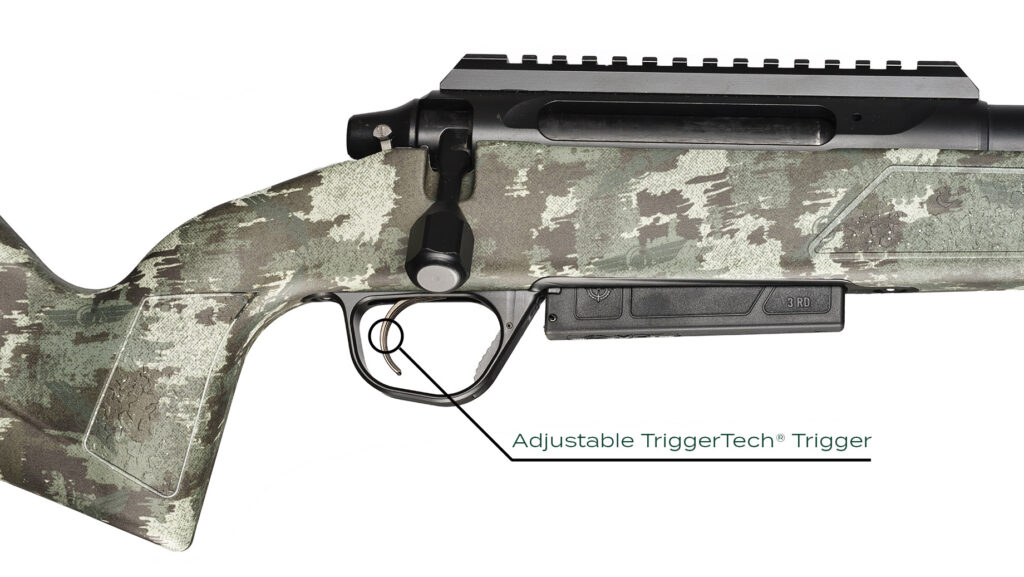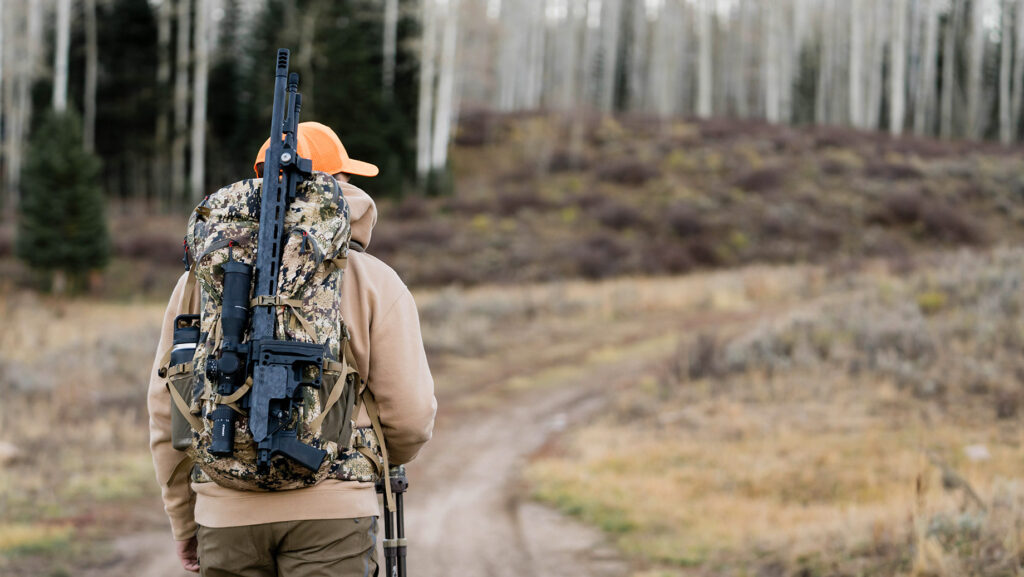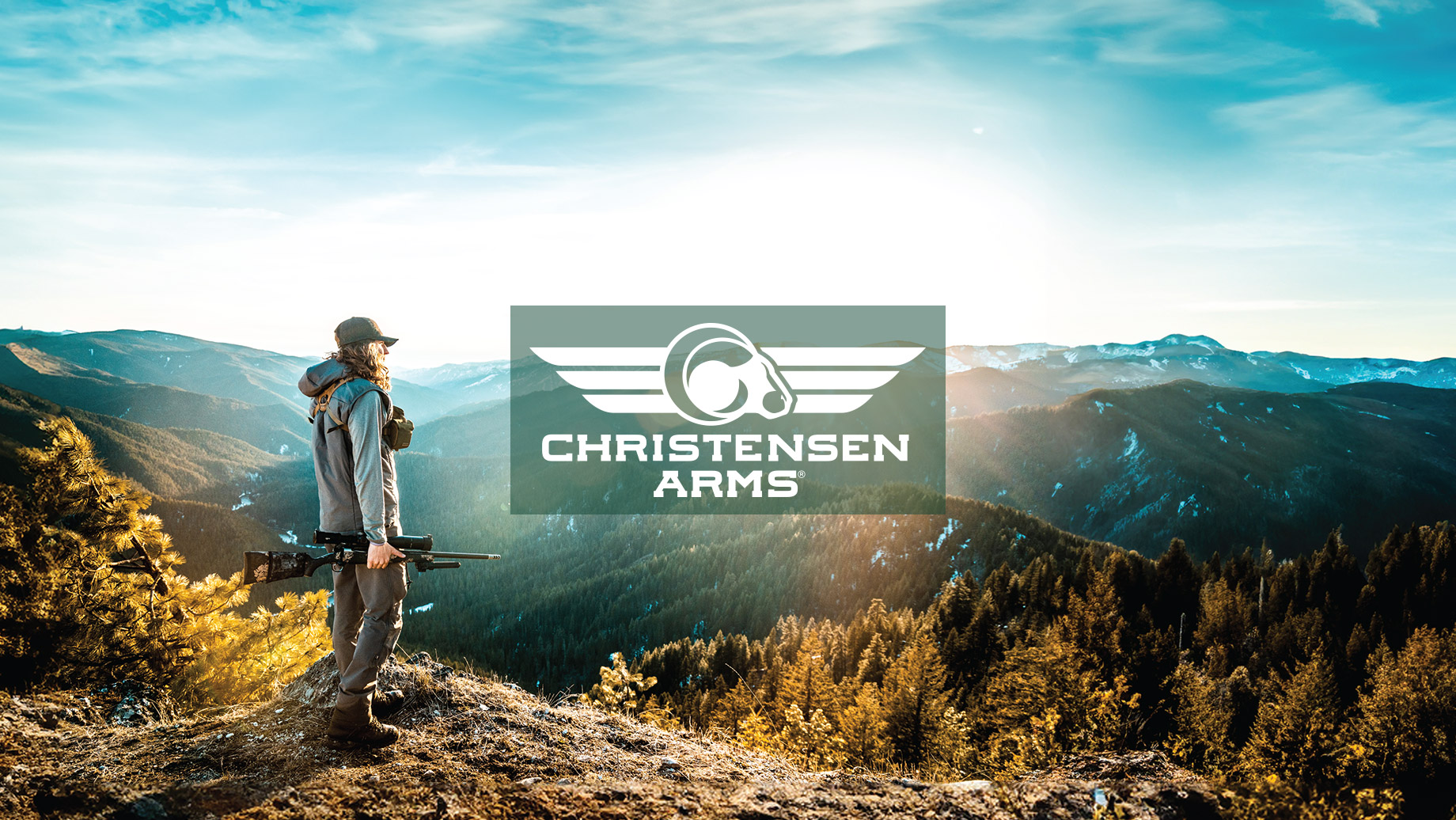
This is the second installment of a three-part series from our friends at Christensen Arms. Stay tuned each month for the next segment. The final part will feature a giveaway with Christensen Arms gift cards: $500 for first place, and $250 for both second and third place winners.
NOTE: Gift cards can only be used on the christensenarms.com web store, and cannot be used to purchase firearms.
Author – Brad Fitzpatrick
There’s no doubt that the styling, materials, and features found on today’s bolt-action hunting rifles make them very different than the most popular rifle models a few decades ago.
I’m a fan of classic hunting rifles with walnut sporter-style stocks and blued metal, and over the years I’ve added several vintage elk rifles to my collection. But I’m also a realist, and I’ve learned (sometimes begrudgingly) to accept and even appreciate the features found on today’s best elk hunting rifles. I’ve also come to appreciate that some of these evolutionary steps forward have made today’s hunting rifles better than guns from years past.
What Makes a Modern Hunting Rifle
But what exactly is it that makes today’s new hunting rifles so effective? Which features are of most value to hunters? We’re breaking down some of the revolutionary aspects of modern rifles to help better understand what makes modern elk guns so great.
Machining and Material Selection: Modern machining practices have made it easier to produce more precise products at a lower cost, and that has been beneficial to firearm owners. Companies such as Christensen Arms that pride themselves on their precision CNC machining offer rifles with excellent accuracy potential because they are built to tighter tolerances than were possible with older machines.
Materials selection is also a key consideration. This is why Christensen chooses high quality 416R stainless metal for several of their rifles, which is durable and is less likely to be impacted by factors like weather and rough handling such as riding in a saddle scabbard.
Manufacturing Excellence
Christensen has also made use of other high-quality materials such as carbon fiber and aluminum, and because so much of their machining occurs in-house, they do not have to rely on vendors to ensure a great product. Machines have not totally replaced humans, though, and that’s one reason why Christensen hand laps the barrels of their rifles for superior consistency. This combination of high-quality materials, precise machining, and hand labor results in a premium product.
Surface Treatments: Even quality metal in firearms generally requires some type of surface treatment for long life and durability. For years the primary option was bluing, but bluing doesn’t protect against rust and nicks and dings expose the vulnerable metal underneath. Stainless steel is also subject to corrosion, but with the added durability of a proper surface finish the metal is effectively protected against the elements.
Companies like Christensen Arms frequently add a Cerakote® finish, which is a baked-on ceramic finish that protects the metalwork against the elements (and, as an added bonus, is available in a range of colors). Some Christensen rifles such as the Ridgeline and Mesa are available with strong, lightweight titanium actions which come with a natural titanium finish that is capable of withstanding harsh conditions without a blemish.
Triggers: Once upon a time factory rifles had terrible triggers, and virtually every serious rifle crank knew that the first step of obtaining really good (or sometimes just suitable) accuracy from a rifle required installing an aftermarket trigger. What a pain! Today’s rifles are far better, though, and many hunting guns come equipped with premium trigger right out of the box.
Christensen Arms rifles (including the entry-level Evoke) come with adjustable TriggerTech® triggers that are crisp, smooth, safe, and light. Few things are more irritating than spending four figures on a hunting rifle only to find that the trigger is junk. With TriggerTech® triggers, shooters can expect excellent performance right out of the box.

Stocks: Stock design is a major consideration when purchasing a rifle. Today’s synthetic stocks (such as the ones found on Christensen Arms’ Evoke are durable, tough, and won’t warp in wet conditions—but there are other options.
Flash Forged Technology
Christensen’s Flash Forged Technology (FFT) stocks such as those found on the Mesa FFT, Ridgeline FFT, Modern Carbon Rifle, and Modern Precision Rifle models (to name a few) feature an innovative, properietary carbon fiber construction that cuts up to a full pound off compared to traditional carbon composite stocks. And because carbon fiber is very lightweight and strong, it’s an ideal choice for mountain hunting rifles.
The Evolution of the Chassis Rifle
Chassis rifles have become very popular with long-range shooters, and with good reason. Chassis systems cradle the barreled action and don’t impact harmonics, and they allow the shooter to add accessories like bipods and sling mounts if they feature an interface system. But some chassis rifles can be very heavy, making them impractical for mounting hunting. Guns like Christensen Arms’ Modern Precision Rifle offer chassis systems that are light and useful for hunting.
The best hunting rifles offer adjustable stocks, and this allows the shooter to change comb height, length of pull, and even cant for a perfect, comfortable fit and improved recoil mitigation. Folding stocks (such as the one found on the Modern Precision Rifle) make sense for mountain hunting because the rifle’s overall length can be reduced to easily and comfortably ride in a backpack.

Barrels: there’s never been an accurate rifle without a quality barrel, so premium “pipes” are worth a bit extra. Christensen Arms’ Evoke rifles come with button rifled, hand lapped, free-floated 416R stainless steel barrels and are therefore very accurate.
Step up to a rifle like the Modern Carbon Rifle and you’ll get Christensen’s signature Aerograde® carbon fiber wrapped barrel, which is incredibly accurate and lightweight.
Today, most rifle barrels are threaded (all of Christensen’s rifles come equipped with threads) which makes mounting a muzzle device like a suppressor or brake simpler. Some barrels with also come with brakes, and if they are quality brakes like the RFR brake from Christensen Arms, they will substantially reduce felt recoil and make shooting more pleasant.
As with stocks, carbon fiber is a popular material for barrel construction. Christensen wraps carbon fiber around a 416R stainless steel center barrel core in a multi-directional pattern, providing better barrel harmonics, improving heat dissipation, and reducing weight—a valuable feature on a mountain rifle. The use of carbon fiber-wrapped barrels helps keep weight down, which is one reason why accurate guns like the Ridgeline FFT can be built starting at 5.3 pounds.
Accuracy: It doesn’t matter how light your gun is, or how good it looks, if it doesn’t shoot well. For that reason, select a gun with an accuracy guarantee. Christensen backs their guns with a sub-MOA accuracy guarantee, and they can do so because the build quality, barrels, trigger, and other features found on their guns combine to create a rifle that is in a class of its own.
There are some caveats with accuracy guarantees, though. First, the shooter has to be up to the challenge. I’ve seen some shooters with bad form who jerked the trigger in anticipation of recoil and I doubt that they could shoot under an inch at 100 yards with the world’s finest match gun.
You must also consider your rifle’s accessories and diet. A loose scope base (a frequent culprit in sub-par accuracy) or ammunition that the rifle simply doesn’t like will limit a gun’s ability to shoot well.
Find a quality rifle with the right features in your price range, determine which loads it likes best, properly mount a quality optic on the gun and you’re ready to hunt. You may have to make some trade-offs: carbon fiber is light but it’s expensive, and adjustable chassis guns will almost certainly cost more than rifles with injection molded stocks. However, with proper practice and good ammo most quality rifles will perform very well for the average hunter.
